Greenland tourism to grow as Donald Trump makes ‘aggressive’ bid for control
The US president wants to control the country, and now his deputy has barged in uninvited. Greenlanders, however, are pursuing a different kind of visitor.
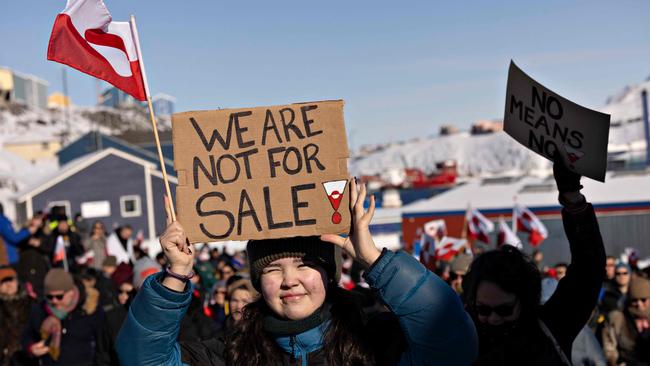
“Down all day” reads my weather app where it usually lists the time for sunrise and sunset. The phrase is repeated daily in the December forecast for Ilulissat, a Greenland town 295km north of the Arctic Circle. “Yesterday was the last day we’ll see the sun until January,” says Elin Andersen when I come to her cosy home on November 30 for kaffemik, a gathering to eat and drink. On January 13, the townsfolk will walk to the icefjord to sing a kind of communal, chorusing sun salutation.
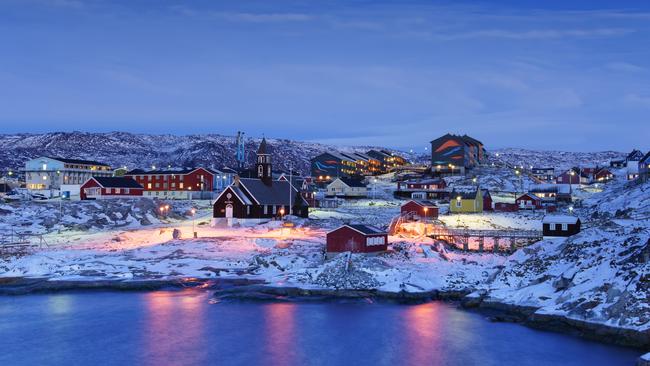
Ilulissat is best known for Sermeq Kujalleq, or Jakobshavn, glacier, which calves about 35 billion tonnes of ice a year into the Ilulissat Icefjord. One of its chunks is thought to have sunk the Titanic in an area to the south called Iceberg Alley, about 640km off the coast of Newfoundland, Canada. Some of the bergs are 1km high, and although much of the ice is submerged beneath the ocean, they dwarf Ilulissat’s colourful houses. A boardwalk snakes through the permafrost at Sermermiut (once an Inuit settlement; now a UNESCO archaeological dig) to look out over Disko Bay at the icefjord’s sea mouth. In summer, the glacier’s calving accelerates and the bay gets clogged with bergs. The astonishing site is soundtracked by the irritable cracks and creaks of the ancient blue-streaked ice as the town’s leashed sled dogs howl. Both, it seems, are itching to be back on the move.
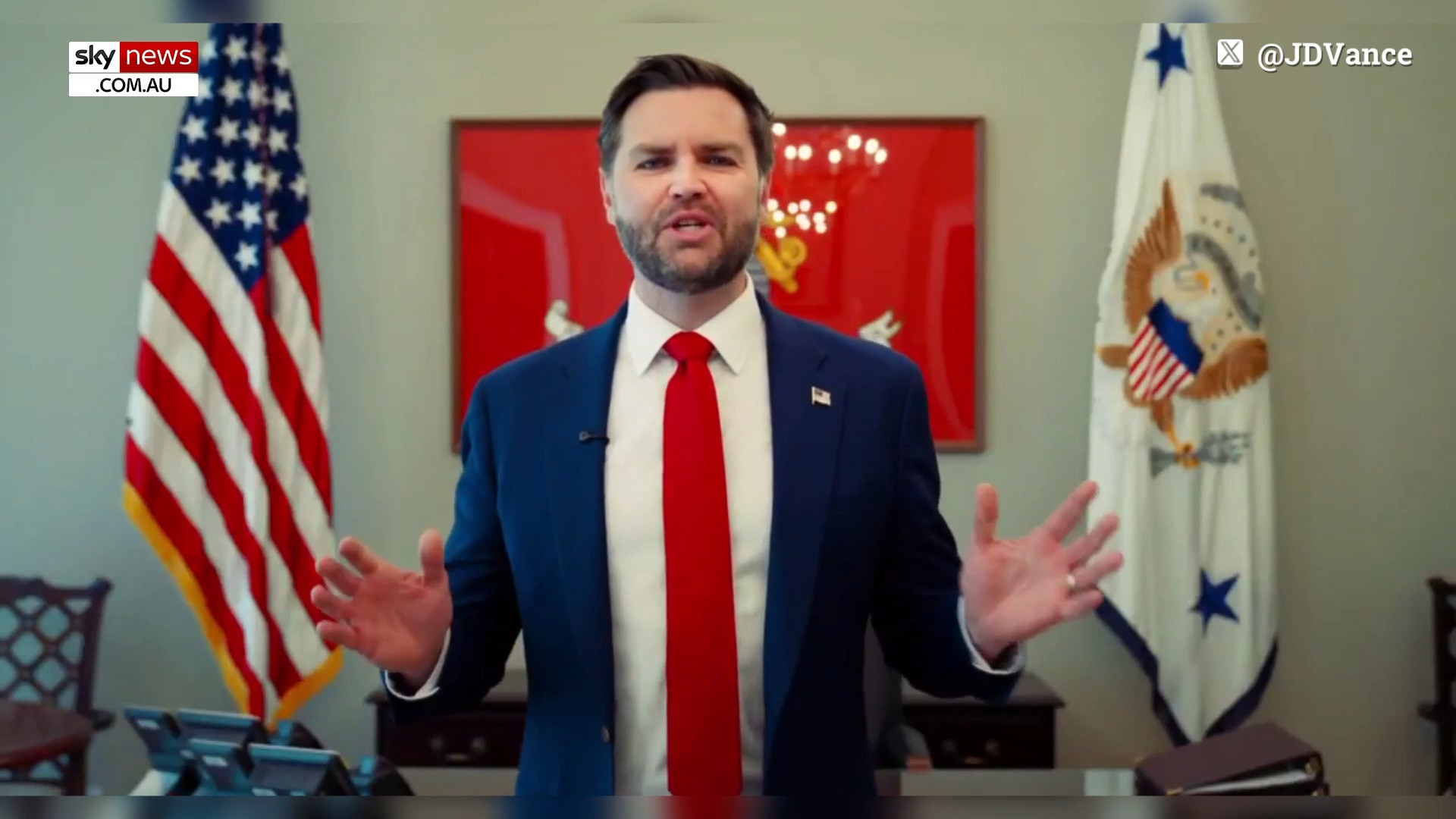
Andersen serves traditional Inuit food such as seal, reindeer, dried halibut, musk ox and mattak (whale skin with blubber) as part of her kaffemik offering. Minke, fin and humpback whales are sustainably hunted in Greenland for vitamin C-rich food, necessary for people indigenous to a land that cannot grow trees, let alone nutritious crops, but this mattak is beluga and “very fresh”, Andersen says.
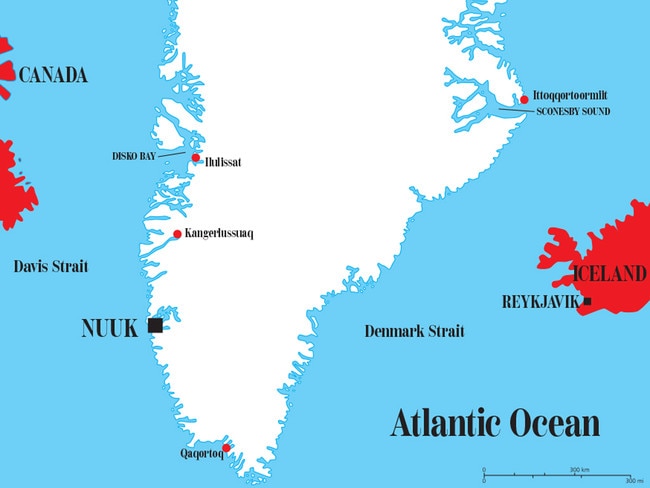
Glistening atop the steel-grey skin is ballet slipper-pink blubber that’s been hedgehogged in the way Australians dice a mango cheek. The texture is so bracing – like a skinned and boned big toe – that I barely note the taste. “Stop chewing now,” Andersen instructs, observing my stalled progress. “Swallow it. We don’t chew it for long or we get chewing gum.” She lights a qulliq (soapstone lamp) that cradles dried moss and Arctic hare droppings, and tends it silently. “I was raised in a colonised time in the 1960s,” she says, finally. “To be part Dane and part Greenlandic was hard … Many Inuit people lost themselves, and their language, in the belief that the Danish way was better. Now we’re coming out from the shell saying, ‘Listen to who we are. Understand us’.”
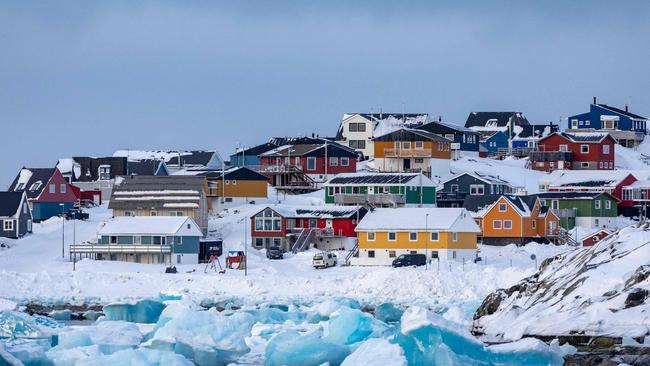
Greenland has been part of the kingdom of Denmark since 1953 and became largely self-governing in 1979. Since 2009, it’s had the right to declare independence if a majority of voters in the population of 57,000 vote “yes” in a referendum. The topic has been thrust into the spotlight here, and internationally, since US President Donald Trump repeated his threats to buy Greenland in a quest to secure American strategic interests plus tap its reserves of rare earth minerals. In recent days, Vice-President JD Vance and his wife flew into the US military Pittufik base in the remote northwest. The visit has sparked fresh outrage from both Greenlanders, who insist their country is not for sale, and the Danish government, which Vance accused of failing in its role as Greenland’s protector.
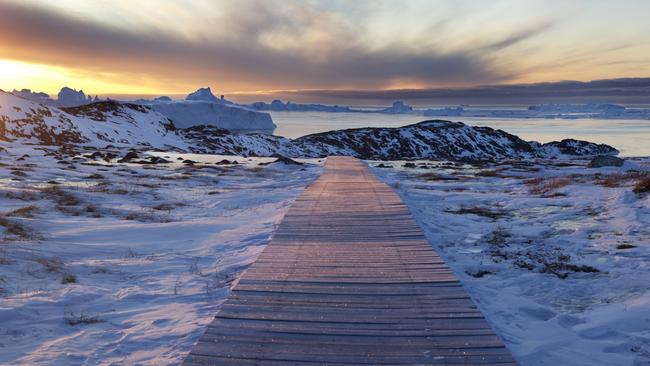
Vance’s visit comes in the wake of national elections earlier this month that were dominated by the issue of independence and saw prime minister Mute Egede toppled by the centre-right Democratic opposition party. Leader Jens-Frederik Nielsen said after his victory: “We don’t want to be Americans. We don’t want to be Danes. We want to be Greenlanders, and we want our own independence in the future. And we want to build our own country by ourselves.”
As the US vice-president touched down, a coalition of four parties was forming government, finding unity in their shared desire to resist US advances.
During my visit in late 2024, the big news is neither Trump nor independence, but the flight I arrive on and the changes it heralds. Along with news crews, celebrities and government ministers, I’m on Air Greenland’s first flight from Copenhagen to Nuuk’s new international airport. The previous main entry point for planes in quirky Kangerlussuaq (founded by the US Air Force during World War II) could add five hours to a trip, and a replacement was sorely needed.
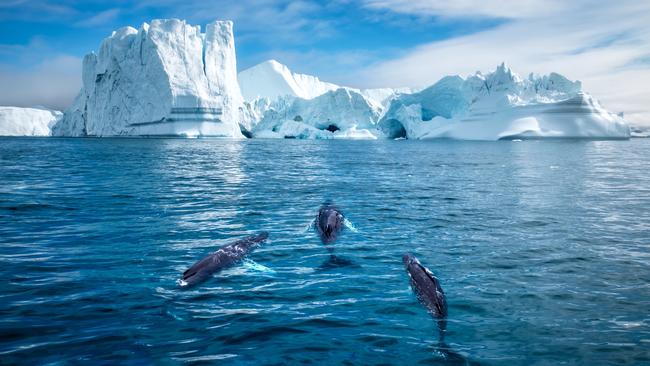
Descending into Nuuk, on the west coast, showcases a snow-carpeted fjord system that’s the second-largest in the world. The largest is Scoresby Sund, in the country’s east. The world’s biggest island is stuffed with superlatives concerning scale. The world’s biggest national park is here too; 972,000sq km in the northeast that’s so remote, icy and unpredictable it’s open only to scientists and select expeditioners. Eighty per cent of Greenland is occupied by an ice sheet, so its main towns are clustered on the fjord-rumpled eastern fringes that thaw over summer to reveal stunning Arctic tundra with horizontal forests of dwarf birch and polar willow.
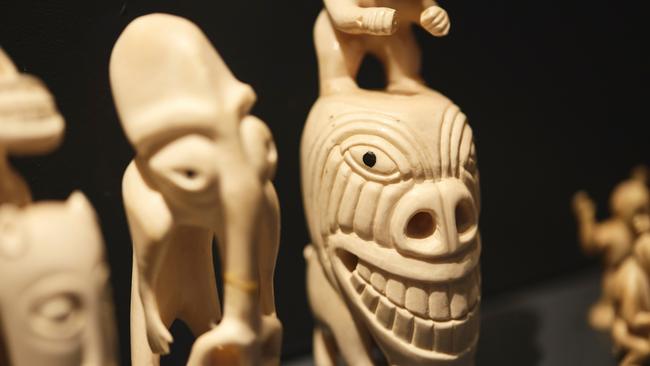
In June, direct flights to Nuuk from New York City on United Airlines commence, with other European airlines vying to be next. No international hotels or luxury resorts await. But Greenland is not a budget destination, either. Prices are high because many goods must be cargoed in (further north, by icebreakers) and the currency is the Danish kroner.
The weather lords over best-laid plans. Its capricious reign has led to the word “immaqa”, meaning “maybe, it depends on the weather”, and Air Greenland’s policy to feed and accommodate all delayed passengers. A windy day might see a fjord cruise cancelled, and an emergency might see a scenic helicopter ride rerouted elsewhere – both happen during my stay. Immaqa, however, is an attitude. In Greenland, you embrace the pivot. And no one doubts the tourists will come. Bigger and better airports are also being built in Qaqortoq (south Greenland) and Ilulissat, both due by 2026.
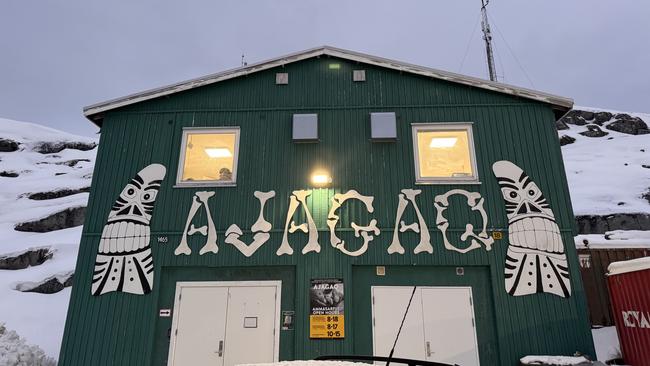
Polar bear skulls are piled casually on a cabinet at Nuuk workshop Ajagaq, where artists come to carve bone, stone, tusk and horn. Artist Kim Kleist Eriksen’s talisman-style carved objects emanate the sinister power of Greenlandic spirits. He tells us about “qivittoq”, the hermit ghost-men that terrify most Greenlanders. “Why are the myths here so bone-chilling?” I ask. “Once, parents had to protect kids from nature, from polar bears and stuff,” Eriksen says. “Reaction time was important, so they prepared kids for the worst.” He’s excited that travel will be easier now to promote his art – and his country. “We’re still invisible to the world but we have so much to offer.”
I encounter a similar positivity from every Greenlander I meet. Yet are they not worried about the potential impact of tourism on their homeland? Yes, as it turns out. That’s why Greenland passed a law requiring tourism companies to be two-thirds locally owned. An environmental zoning system aims to spread visitors out and restrict access to vulnerable areas.
“The laws are a big reason we went into tourism,” says Casper Frank Moller of new company Raw Arctic, which specialises in fly-fishing, hunting and boat tours. In 2023, a whopping 64 per cent more cruise passengers stopped in Greenland ports than during the previous biggest year, 2019. “The cruise ships have been earning the money but now it will be much easier to be a Greenlandic entrepreneur,” says Moller.
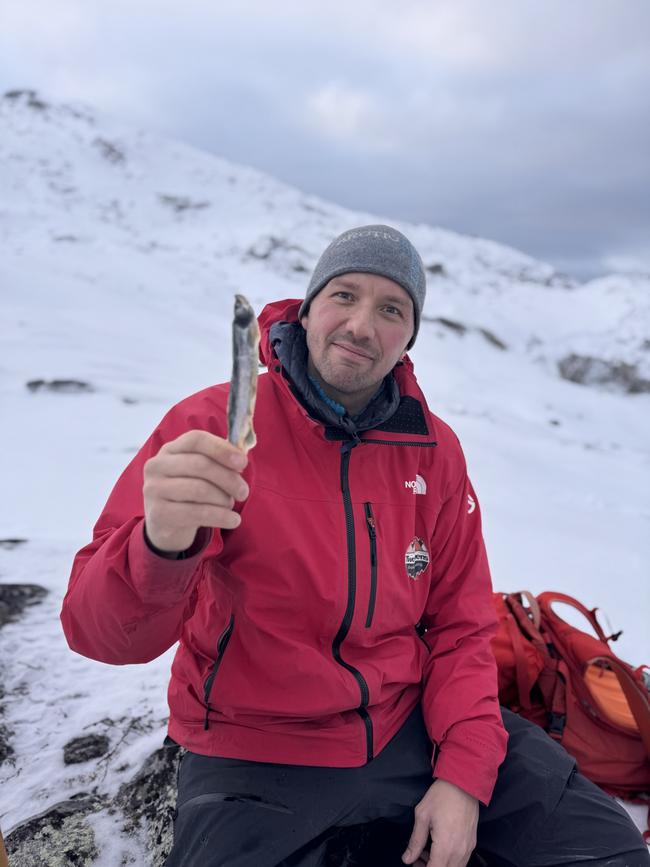
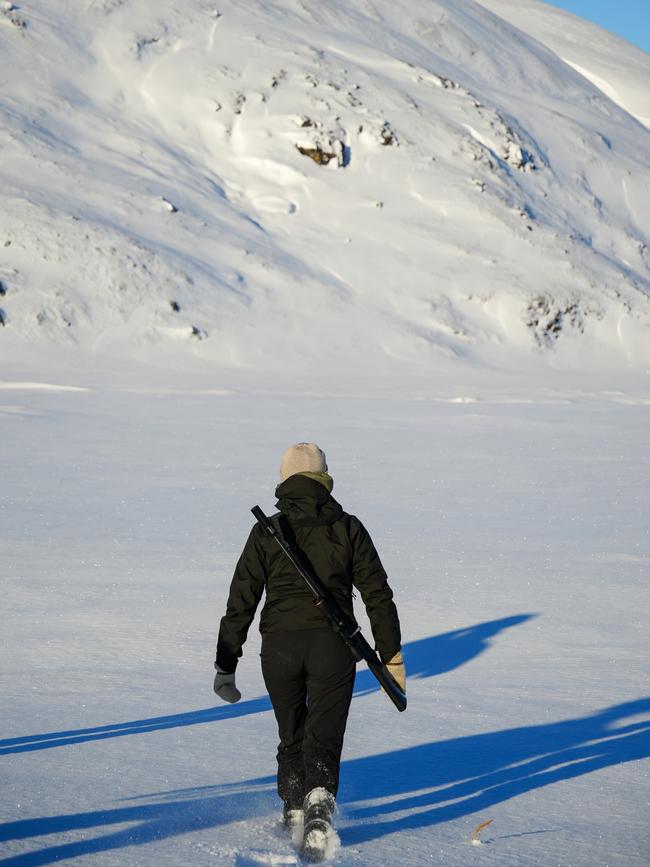
While ships mainly come in the summer, after the sea ice has melted, Greenland hopes the new flight routes will lure more land-based visitors in winter to extend the season and generate year-round tourism jobs. Towns here have roads but where the houses end, so does the asphalt. Beyond is a vast backcountry where, in winter, tourists can dog sled, snowmobile, heli-ski, cross-country ski, snowshoe hike, ice-fish, sleep in igloos and do saunas and scenic cold plunges.
Eider ducks are bobbing around in Nuuk fjord on my hike with adventure specialist Two Ravens. Co-founder Thorlak Skifte Nielsen tells me about a rugged 30-day trip on which he brought only capelin (small fish), dried reindeer and a bag of salt as food. “It’s all we needed, we could feel how strong we got, and our skin was glowing,” he says.
But don’t pigeonhole Greenland as a spot only for intrepid adventurers. Just being here, marvelling at the landscape, and absorbing the blend of Inuit and Scandinavian culture, gets under your skin, even if you never clip on a crampon. Intimate museums have fascinating displays on Inuit drum circles, sealskin and whalebone kayaks, tupilaks (ghoulish carved figures, traditionally set by a shaman upon one’s enemies) and much more.
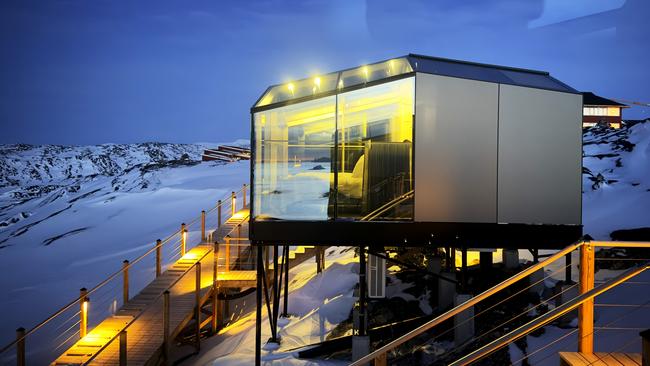
In Hotel Arctic’s glass cabins in Ilulissat, the best place is on your back, in bed, as the northern lights swish their green gauze skirts in the sky above. As a child, Visit Nuuk’s Bea Husum Terkildsen was told to “shhhhh” when the lights were active. “Some of them are ancestors and look like very big people running around,” she says. “My grandparents would say, ‘Look but don’t whistle because they’ll kick your head off and use it as a football’.”
The aurora is visible on most clear winter nights in Ilulissat. But it’s the daytime that really has me swooning. With the sun “down all day” I’m expecting darkness. I am wrong. Dawn begins mid-morning as shapes find definition in a deep navy glow. By 11am, the violet-blue luminescence is as atmospheric as a moodily lit club, and between noon and 2pm everything’s buttered by a gentle peachy ambience. Structures cast no shadow. By 3pm, drifts of purple, green, yellow and apricot gild the horizon before it dims, and darkens, again.
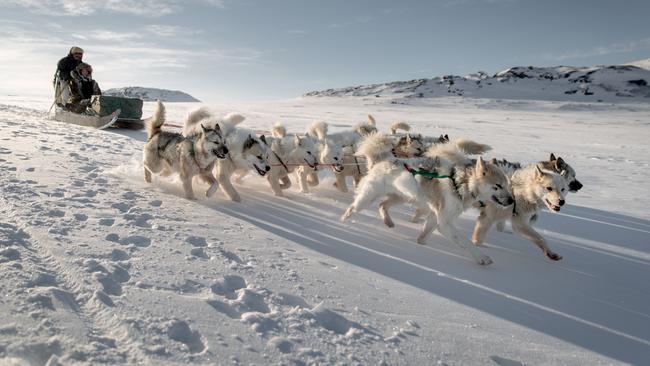
“I’m very fond of my dogs,” shouts Nive Heilmann, of Disko Bay Tours, over a symphony of yelps and yowls and rattling chains. We’ve fanged across the frigid tundra in an open-sided jeep to where Heilmann and dog musher Frank Larsen keep their 60 hounds. It’s minus 18C but Heilmann has lent me a sealskin anorak and I’m toasty warm. After feeding the dogs, Larsen takes us out on the sled. I’d expected something fast and wild but it’s more glide than ride; smooth and snug and dreamlike.
“The dogs are disappearing due to climate change,” says Heilmann. “People get larger engines on boats instead because sea ice is diminishing and they can sail year-round to fish. We want to use the dogs with tourists because it’s a big adventure and it keeps them in our culture.”
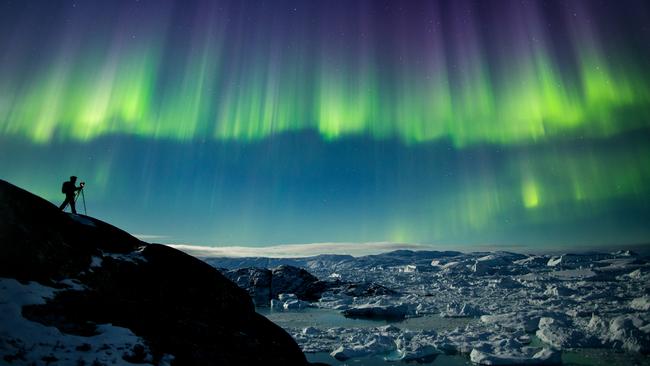
In the know
Hotel Arctic’s seven new Aurora Cabins offer panoramic views of Disko Bay. The glasshouse design ensures they are windows to the northern lights in winter and flooded by the midnight sun in summer. Tea and coffee, snacks and a sandwich are included. From 4595 Danish kroner ($1060) for a queen room.
Raw Arctic focuses on tailored all-inclusive trips Greenland-wide. It also offers fishing tours, exclusive boat charters and immersive hunting expeditions. A three-hour northern lights tour in Nuuk fjord is 1600 kroner.
Two Ravens focuses on small groups led by experienced guides across Greenland. Tours include multi-day treks, heli-skiing, adventure camps, summit hikes, igloo sleepovers and kayaking. A three-hour backcountry hike with local food tasting is 1800 kroner.
From icefjord sailing to glacier walking,
Disko Bay Tours is an Ilulissat region all-rounder. Its most popular outing is dog-sledding. Sled trips range from one to four hours, from 1500 kroner to 2500 kroner.
Air Greenland travels between Copenhagen and the new Nuuk airport five times a week.
Kate Hennessy was a guest of Visit Greenland.
Additional reporting by Penny Hunter.
If you love to travel, sign up to our free weekly Travel + Luxury newsletter here.

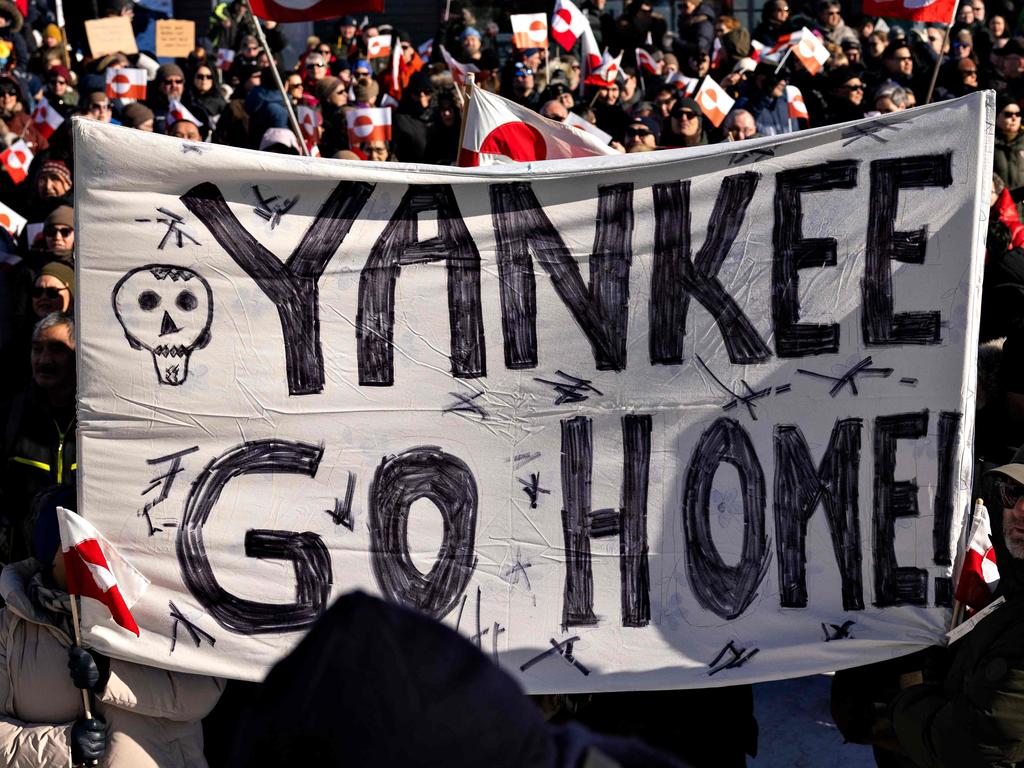
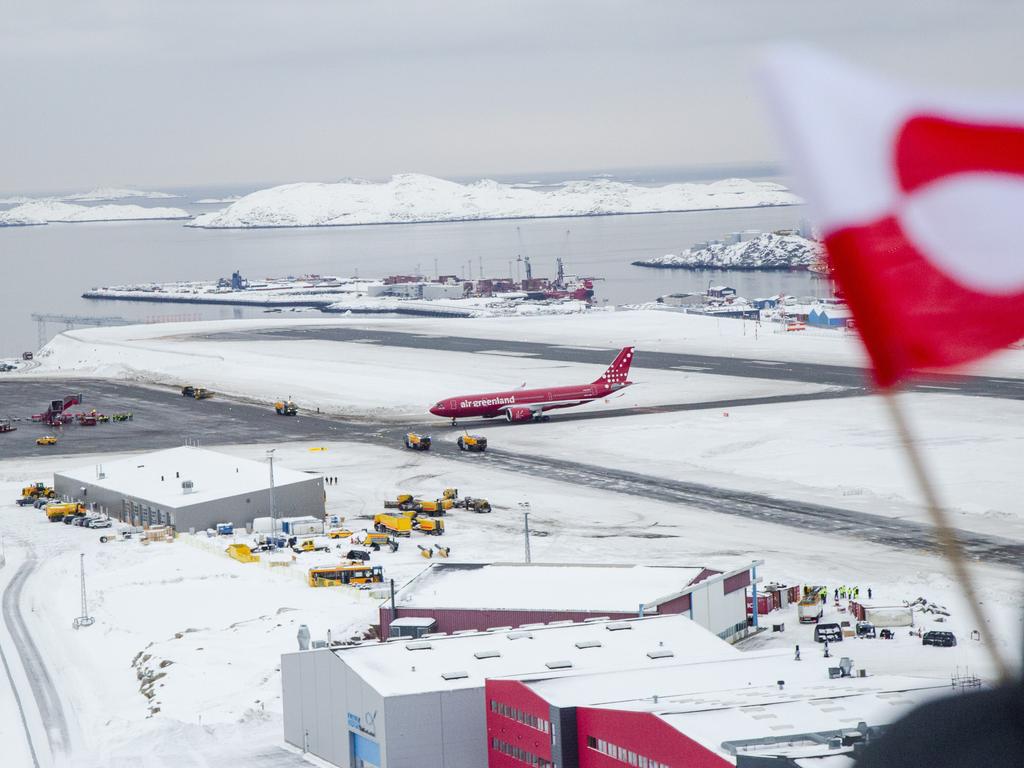
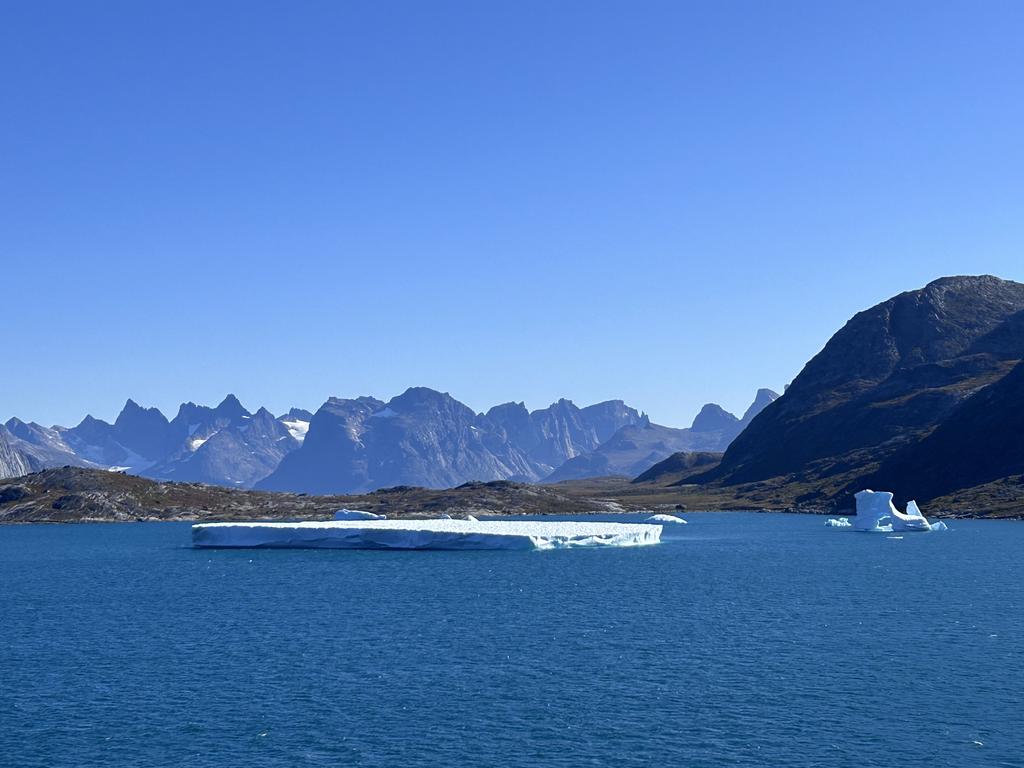
To join the conversation, please log in. Don't have an account? Register
Join the conversation, you are commenting as Logout